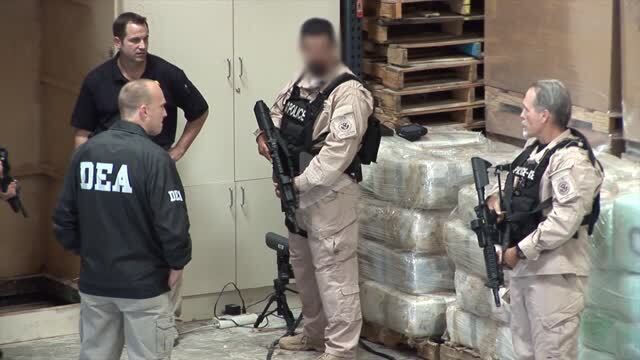Already a subscriber? Make sure to log into your account before viewing this content. You can access your account by hitting the “login” button on the top right corner. Still unable to see the content after signing in? Make sure your card on file is up-to-date.
According to a new report released by the US Drug Enforcement Agency (DEA), two powerful Mexican drug cartels have established a significant presence in all 50 US states, using violence to eliminate their competition.
The report identifies the Sinaloa and Jalisco cartels as the primary drivers behind the US’s deadliest drug threat to date. These cartels have significantly contributed to the opioid crisis, with fentanyl being a major factor. Federal officials link around 200 deaths per day to fentanyl, with 38,000 fatalities reported in the first half of 2023 alone.

Utilizing established trafficking routes and major drug wholesalers, the cartels have created sophisticated networks to not only smuggle drugs into the US, but to also distribute them. According to the DEA, they leverage smaller cartel branches and collaborate with local drug groups and gangs, often using social media platforms like Facebook, Instagram, and TikTok to facilitate drug distribution.
The Sinaloa Cartel:
The DEA considers the Sinaloa cartel to be the leader in the fentanyl market, generating billions in revenue a year. Since 2012, it has been producing fentanyl in bulk, exploiting its lower production costs compared to traditional plant-based drugs. The cartel’s operations are sophisticated, often involving the use of border tunnels and bribing officials to smuggle precursor chemicals necessary for synthetic drug production into the US.
The Jalisco Cartel:
Meanwhile, the Jalisco cartel employs vast financial resources and violence alongside a franchise-based structure to maintain its operations. It is a significant supplier of cocaine and also traffics in marijuana and heroin, using its profits to expand its global footprint. The cartel primarily uses illegal ports of entry and vehicles to transport drugs, relying on smuggling routes rather than controlling border territory.
In response to these growing threats, the DEA has intensified its efforts through operations like Overdrive and Last Mile, which led to 3,337 arrests and the seizure of nearly 44 million fentanyl pills and over 6,500 pounds of fentanyl powder between May 2022 and May 2023.






